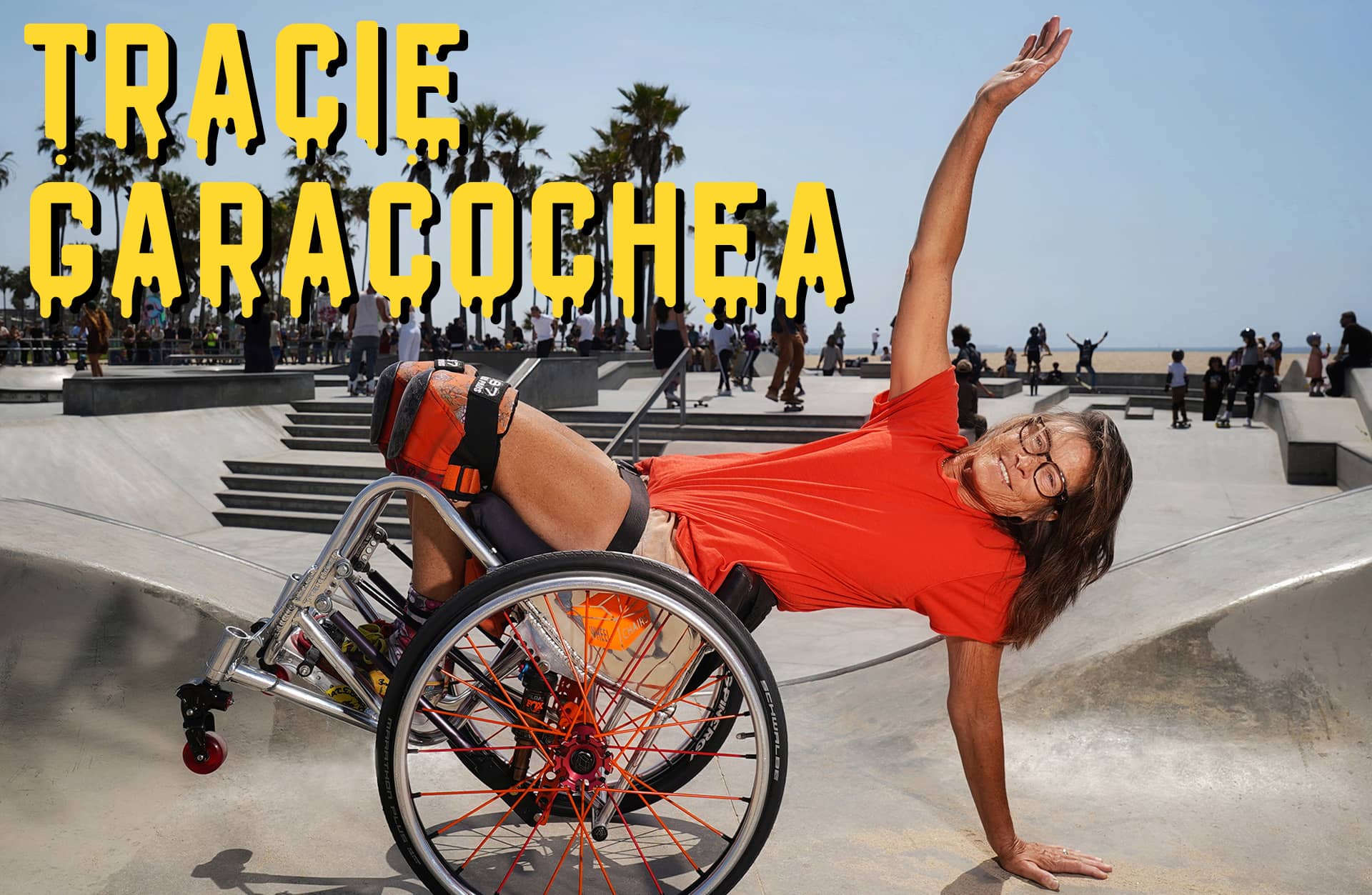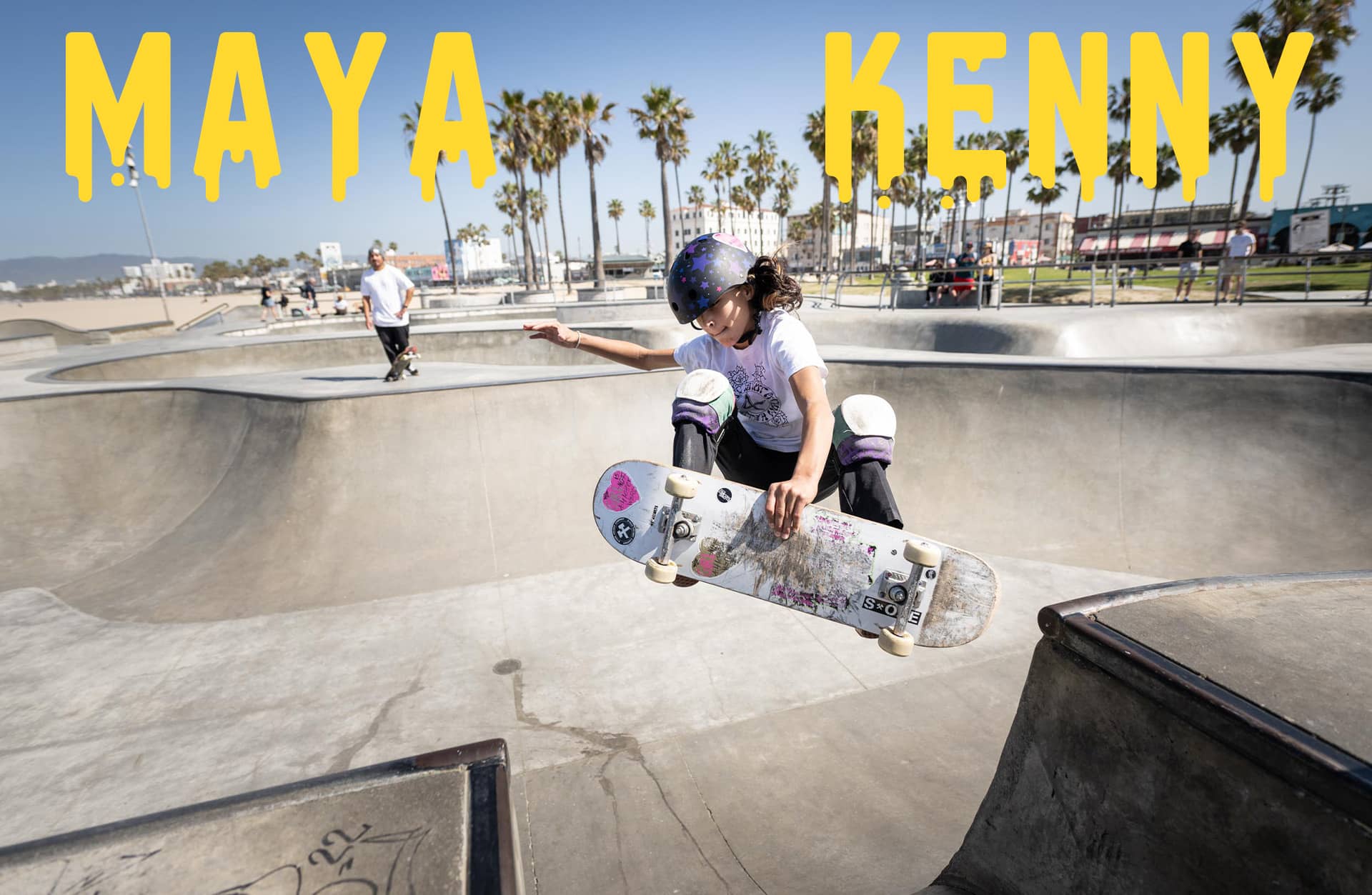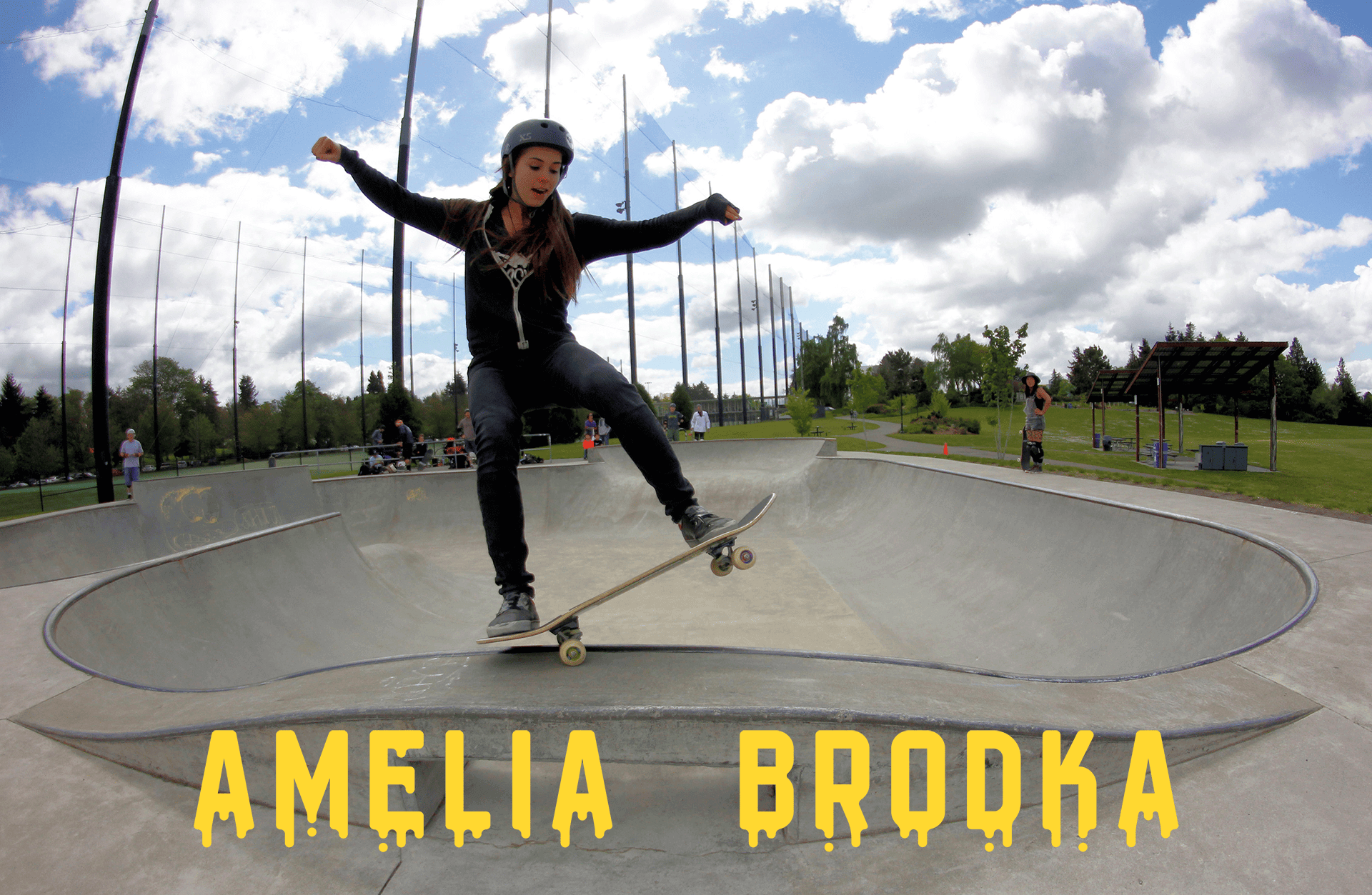SKATE // 01 SEP 2022
CATCHING AIR IN HER CHAIR
You can’t turn a corner in Venice Beach without passing a piece of skateboarding history. The sunny beaches of Dogtown have fostered generations of athletes, each expanding the definition of the sport. Paving the way for the next evolution in skateboarding is Tracie Garacochea, perched on the edge of the bowl, ready to drop in her wheelchair.
“I grew up with a bunch of boys, and we used to call it the Olympics at our house. We had a swimming pool, we had a basketball court, we had tennis, we had volleyball, we had everything,” laughed the 62 year old skater. “I was a gymnast and I was really bad at it, I didn’t have balance. The beauty of it is I now know why I didn’t have balance, but I really loved doing it. So, why does it really matter if you’re bad at something? But, there were parts of it that I was good at.”
The poor balance Garacochea struggled with in her youth was eventually explained by her later multiple sclerosis (MS) diagnosis. It is a disease that causes the immune system to attack its own nervous system, leading to unpredictable symptoms, including numbness, memory problems, and paralysis. Walking became a painful process for Garacochea that required the assistance of a cane. Even as getting around with her cane became cumbersome, she resisted using a wheelchair. “The thing about it is, there was no reason for me to be hesitant. But, I didn’t know that. It was explained to me that wheelchairs are a tool, just a tool,” said Garacochea. “I don’t know what was preventing me from taking that step, but when it was explained to me and when I got my own, my life really improved. With that came the WCMX skateboarding in a wheelchair. It has been a really fabulous place to be.”
When Garacochea’s sport of choice, running, became arduous, she switched to cycling. While she enjoyed the adrenaline rush, Garacochea often felt unsafe when cycling around and was once hit by a car, even with a flag. She was frustrated. For her own safety she felt that she had to load up in a car with her bike and drive to a designated bike path, making it a whole troublesome ordeal. “I had been volunteering with helping some kids cycling. I was a guide helping keep them in line,” recalled Garacochea. “[Then one day instead of biking] they were going to a skate park in their wheelchairs and I was invited [to help supervise]. Who doesn’t want to go? These kids were going to go have a great time. So, I went and it was absolutely a fabulous time. One of the ladies there said, you want to try it? I tried her chair and I was hooked.”
As soon as she got home, Garacochea ordered her own Wheelchair Motocross (WCMX) chair and was practicing wheelies the day it arrived.
“I hadn’t really planned on being especially good at the sport I had just planned on just having a great time,” laughed Garacochea. “Little did I know it would be something that I am actually reasonably good at and I really love the community. It’s the skateboarding community that has been incredibly fabulous. I have met so many amazing people who have really embraced me.”
Dropping in, carving up bowls, and grinding rails, Garacochea competes at local skateboarding events to elevate her skills, enjoying the community and even occasionally placing. “The people who are doing this sport, they have feelings and they really care about what they’re doing. It’s more than just having a competition. It’s showing all these other people what’s possible. We have to look at the bigger picture here. But trophies and medallions are kind of cool anyway.”
By showing up and showing off, Garacochea hopes to change the narrative around wheelchairs, that this mobility tool can also be a lot of fun, especially for kids. WCMX chairs are built to be beat up and last. A standard insurance issued chair will be about ten pounds heavier, have no shocks, and can potentially throw the user forward and out of their chair if they hit a crack. This heavy and clunky way to navigate the world would be frustrating for anybody, doubly so for a rowdy kid looking to create some good ole’ childhood mischief. “We all know that when kids play, they learn. And when they play as kids, they learn better social skills and they’re better at school,” explained Garacochea. “I know kids that have gotten fabulous chairs at a young age that are playing able-bodied sports. Now, that’s not everybody’s goal and it doesn’t have to be, but it really is kind of beautiful, because like I said, we do things differently but the same.”
Regularly volunteering with girl skate groups, Garacochea lets the kids take her chair for a spin. “I get to encourage them to try things, and they might listen to me a tiny bit more than their parents,” she laughed. “It’s the same way with the disabled kids. Here I am, an old lady in a wheelchair, and they don’t know my history or anything, and I can tell them a few things and teach them a few skills, and it’s golden. I can make up tricks for them, and they just take off and you see the light in their eyes.”
Both Garacochea’s park chair and everyday chair are built with suspension, the main difference between the two being the position she sits in when riding. However, don’t be fooled into thinking Garacochea stops skating when she switches chairs and leaves the park. “I love jumping off of things,” she grinned. “Jumping off the sidewalks and curbs and going up and down stairs. Especially if people are standing in curb cuts. I feel like I need to school them. What curb cuts are actually there for, not for them to stand in if there’s someone in a wheelchair behind them. People in wheelchairs need that momentum to cross the street.”
A lifelong adrenaline junkie and inspired by other WCMX riders, such as Aaron Wheelz, Garacochea in the past has focused on distance-based stunts. Now she focuses on other aspects of her sport, like style. “Occasionally I will get a line, but I am almost 62, there are a lot of things that I won’t be doing,” she laughed. “I don’t need to. I focus more on my style and my height and things like that.”
Expanding more on how she evokes her style, Garacochea explained, “I can skate on a longboard. No, I’m not actually physically doing it, but I’m skating [like I’m] on a longboard, or I’m airing out of something. Am I physically? No, but it’s how I do it. We’re all [at the skatepark] doing the same thing differently, skating the same, just differently.”
“The best part is when I go into a skate park, I’m like everybody else. We’re all there for the same thing. It doesn’t matter how you get in there or what you look like or your skill level. We’re all there helping each other, yelling for each other, and just pushing. It’s like when somebody else gets a trick, I feel it in my body. It’s that kind of joy that I feel in the skate community. It’s pretty darn awesome.”
With no governing body, WCMX remains fragmented with no events where riders can connect. “I know there are people out there that are doing the same things we’re doing. We just don’t know who they are yet. We need to somehow get somebody that is going to bring us all together and organize us now. I don’t have the organizational skill nor the time. My brain is just not organized. The MS took care of that one,” laughed Garacochea.
Looking forward, Garacochea plans to continue working to grow her sport and share grant programs to help kids get better equipment. But most importantly, Garacochea wants to remain active in her sport, whether that be competing or hanging out with her skateboarding friends.
Powered by a contagious spark for life, Garacochea is constantly expanding her definition of herself. While MS may have altered her means, Garacochea never stops, pushing forward for the next thrill. “The physical changes, it’s just having to make a decision and that part hasn’t been horrible. Mentally sometimes it’s been a little [rough], but I don’t take that out in the world with me. Yeah, it was really sad when I gave up my sculpture, but now I have something else I can do. Like playing with photography, and when I noticed I had hand trimmers, I was like, hey, macro photography sounds really good, doesn’t it? I get some really fun effects with [my] hands and shakes. So, there’s always something to do, something different. If you grew up being creative, you got to do something creative. If you grew up athletic, you’ve got to keep that stuff in your life. You just have to not sit around and wait for it. It’s kind of like sitting around waiting for someone to knock on your door. That generally doesn’t happen. You got to invite somebody over first. No one’s going to do it for you.”






